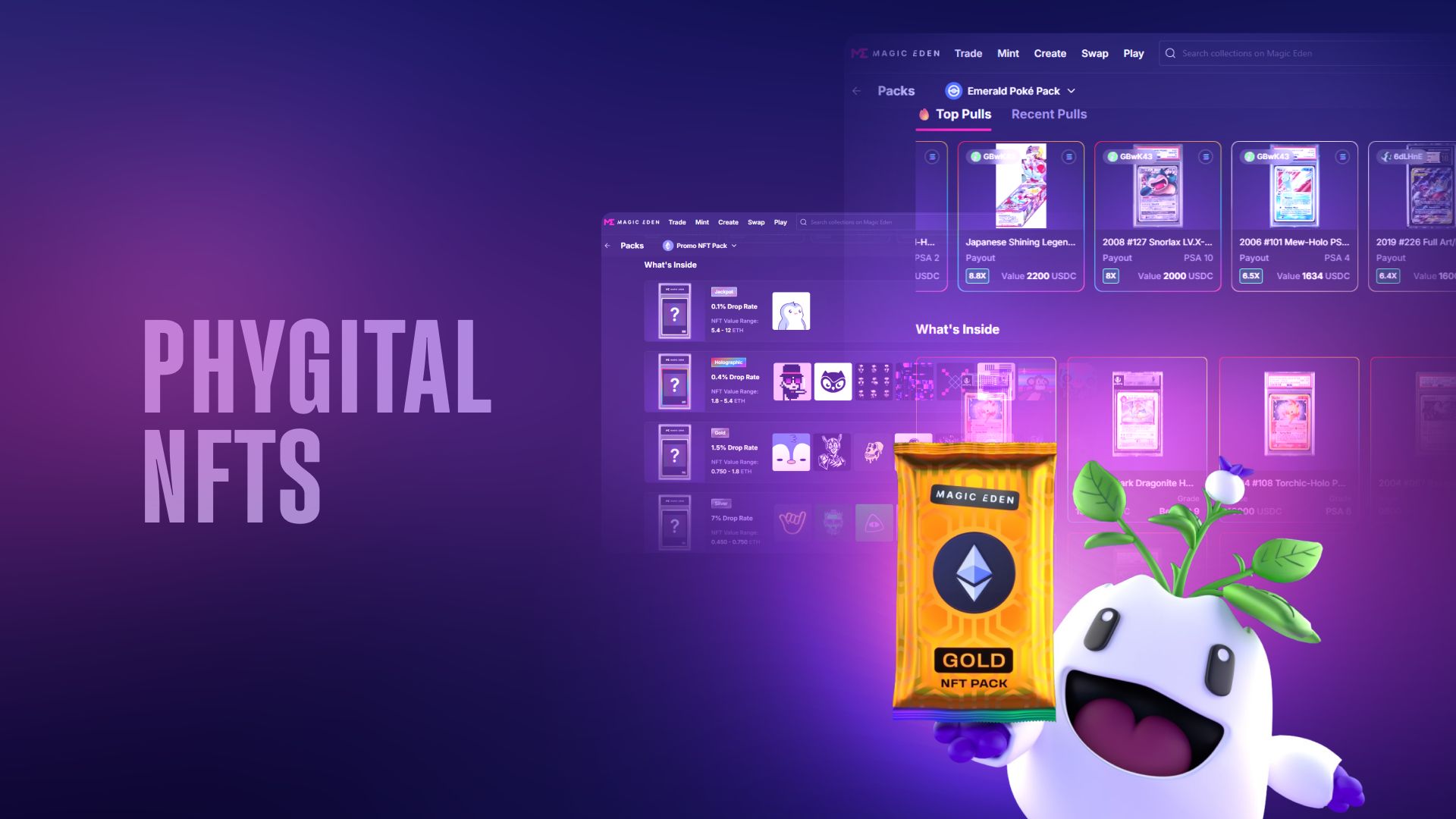
ApeChain is here. Powered by ApeCoin, the new Layer 3 blockchain is packed with a suite of new features and capabilities.
Read on to learn what makes ApeChain tick, how it stacks up in the world of NFTs and Web3 and why you might want a piece of the action.
ApeChain is a Layer 3 (L3) crypto network created as an Arbitrum Orbit chain by the ApeCoin DAO.
ApeCoin (APE)—that’s the same APE tied to Bored Ape Yacht Club (BAYC)—powers the new EVM-compatible blockchain chain.
With a focus on content, tools and distribution, ApeChain’s ecosystem now includes a growing suite of financial tools, infrastructure, and games, all EVM-compatible. Native yield capabilities can keep your APE working for you even when it’s just monkeying around in your wallet.
The Ethereum blockchain is known as the base layer, or Layer 1 (L1). Layer 2 (L2) blockchains depend on L1, and help the base layer operate more efficiently. An example of an L2 is Arbitrum, upon which an L3 can be built—in this case, ApeChain.
While Layer 2 blockchains will usually be focused on improving a blockchain’s performance, Layer 3 adds to the blockchain’s capabilities in communicating with other blockchains.
And like other layers, each Layer 3 will have it’s own features to set it apart. Here are some of the ways ApeChain is different.
ApeChain is governed by the ApeChain DAO, made up of APE token holders. They also use a Security Council to address any critical risks to the protocol and ecosystem. In the future, the DAO is expected to set elections for the Security Council so that the whole community can vote.
Currently, there is an interim Security Council, which consists of a small group of Ape Foundation and infrastructure partner signers.
ApeChain was created as an Arbitrum Orbit chain, which means that it can take advantage of Arbitrum’s features. Stylus is a great example.
It lets developers build smart contracts using WebAssembly (WASM)-compatible languages like Rust and C++. Aside from these, ApeChain supports Solidity for smart contract development due to its compatibility with Ethereum Virtual Machine (EVM).
By settling on Arbitrum One (like all Arbitrum Orbit chains), ApeChain inherits Arbitrum’s infrastructure and security, which in itself is derived from Ethereum. It’s a Optimistic L3 that uses rollups to bundle up multiple transactions into a single batch, then to be processed and verified on its main chain.
Some assets on the ApeChain ecosystem can automatically generate yield when you forward them to vaulted sources of yield on the Ethereum mainnet. This creates an incentive to bridge your assets to this chain.
ApeChain boasts Native Yield in three rebasing modes: automatic, void, and claimable.
Automatic yield means that your balance automatically increases as yield is earned, so no extra steps are required. With claimable yield, it accumulates, but you need to claim it manually; your balance doesn’t increase by itself. If the yield is void, then the balance doesn’t change.
Currently, supported source tokens are USDC, USDT, DAI (generating yield in apeUSD), ETH, WETH (returning apeETH), and APE.
Multi-Hop Bridging allows transitions to be executed across several bridges at once. It works by preparing call data, which instructs the Gateway to fulfill specific actions. This feature will allow ApeChain to execute more complex transactions.
The biggest challenge for ApeChain will be to attract builders and users (as is the case for all blockchains). While the ApeChain mainnet is already home to several games, digital collectibles, and other dApps, there are many L2’s and L3’s competing for attention.
Additionally, the ApeChain team incentivizes building on its network using the Banana Bill.
The Banana Bill is the name for a program that includes over 100 million APE set aside to fuel commercial agreements. It encourages Web3 companies, capable creatives and collectives, dev teams, and ready-to-launch projects all to apply. In return, they can get boosts from the team through tiered funding and increased visibility.

ApeChain’s already buzzing with numerous live projects, and we’ve got a quick rundown of what’s out there.
Top Trader is the name of a “schizo trading game,” according to its description, where you compete in a trading simulation game with up to 1,000x leverage. Seems like a super ape level! In either case, you can earn APE by outperforming your peers in daily trading simulations.
Arbitrum’s largest DEX is called Camelot and it’s part of the ApeChain ecosystem as well. It has more than USD 30 billion in total volume traded and has 75 partners among different Orbit chains.
Ape Names is the name of the .APE top-level domain name provider that lets you choose APE-related domain names in Web2 and Web3 worlds.
Last but not least, Made by Apes is the name of an intellectual property project made up of 400+ builders using BAYC IP across brands, products, and services.
Bridging and swapping tokens is a key use case. Magic Eden Swaps makes it easy.
Bridging refers to transferring a token from one blockchain to another, while swapping refers to exchanging one token for another. You can do both to and from ApeChain using Magic Eden. You can even use cross-chain swaps, which bridges assets and makes a token swap all in a single transaction.
Both features are found in the same place: within the Magic Eden Swap feature.
To swap, start from the Magic Edens on the Magic Eden marketplace (you can find it in the upper right part of the screen, next to the search bar). The remaining steps are very simple:
1. Find APE in the list of tokens: Click on the token being swapped, select ApeChain from the list of blockchains, then find the APE token.

2. In the same way, find BTC in the list of assets you’ll receive: Make sure you’ve selected the Bitcoin blockchain as well.
3. Enter the amount you want to swap: Make sure you have enough for both the swap and transaction fees.

4. Click on ‘Swap’ and wait for the transaction to go through: This can take some time, depending on the network status.
5. And you’re done! Now you’ve swapped APE for BTC using the Magic Eden Swap feature.
The process of bridging APE from Ethereum to ApeChain is identical to the swapping process. You only want to make sure you’re using the correct blockchain for bridging.
1. Select the correct starting blockchain: Find the Ethereum version of APE in the list of networks that are supported by Magic Eden.

2. Select the target blockchain: Here, you want to find APE on ApeChain. The two tokens will have tiny icons next to their pictures showing the blockchain symbol. Make sure to double-check them.
3. Enter the amount you want to bridge: Just like before, you’ll need to cover transaction fees as well.
4. Wait for the confirmation: After clicking ‘Swap’, you just need to wait for the tokens to land in your wallet and you’re all done!
ApeChain NFTs launched with a bang, with over 4.5k users in the first day. Several projects have launched since, and more collectors have flocked to this exciting new Layer 3 chain.
Magic Eden is the largest ApeChain NFT marketplace.
On Magic Eden, you can trade NFTs, view the biggest performers, browse lesser-known mints, and follow the latest drops in the NFT Drops Calendar.
Connect your wallet to Magic Eden now to start mining ApeChain NFTs.
The ApeCoin ecosystem is called ApeChain. It’s developed as a Layer 3 blockchain on top of Arbitrum and boasts integration with Arbitrum technology, plus a number of its own features. This includes native yield, which is a handy way to generate ApeCoin passively, and a number of different dApps already live on the ApeChain mainnet.
Yes, ApeChain is EVM-compatible, as it’s built on Ethereum’s Layer 2 blockchain Arbitrum. This means devs can use Solidity to create smart contracts seamlessly. If you’re already comfy with the EVM environment, jumping over to ApeChain is smooth—no learning curve needed.
Yes, the Magic Eden Wallet supports ApeChain. You can send, receive, store and track your APE tokens from within the wallet, use the Swap feature in the wallet or the Magic Eden Swaps web app to swap for new tokens or bridge them to other blockchains. You can also find other tokens in the ApeChain ecosystem quickly and easily in the Magic Eden Wallet.
The information provided on this website is provided for general educational purposes only and is in no way financial or investment advice. Certain information may have also been provided to us or prepared by third parties; these materials are provided for convenience and are not an endorsement by Magic Eden. Magic Eden is not liable for any errors, changes or amendments to such information, including any actions taken in reliance on such information.


